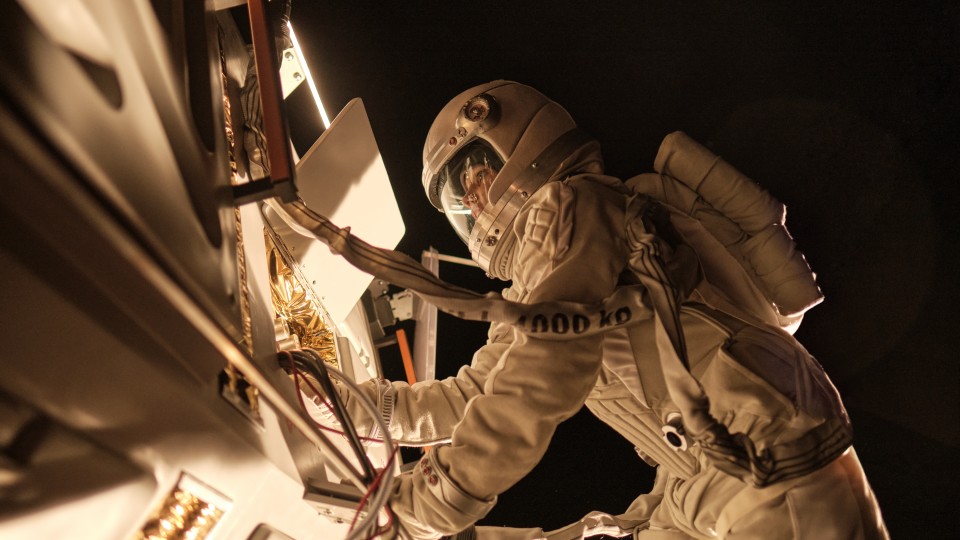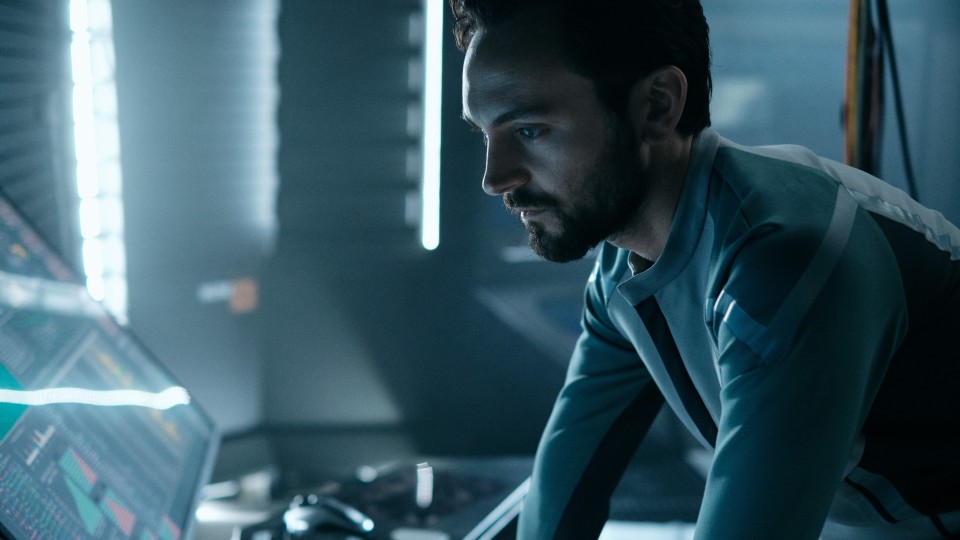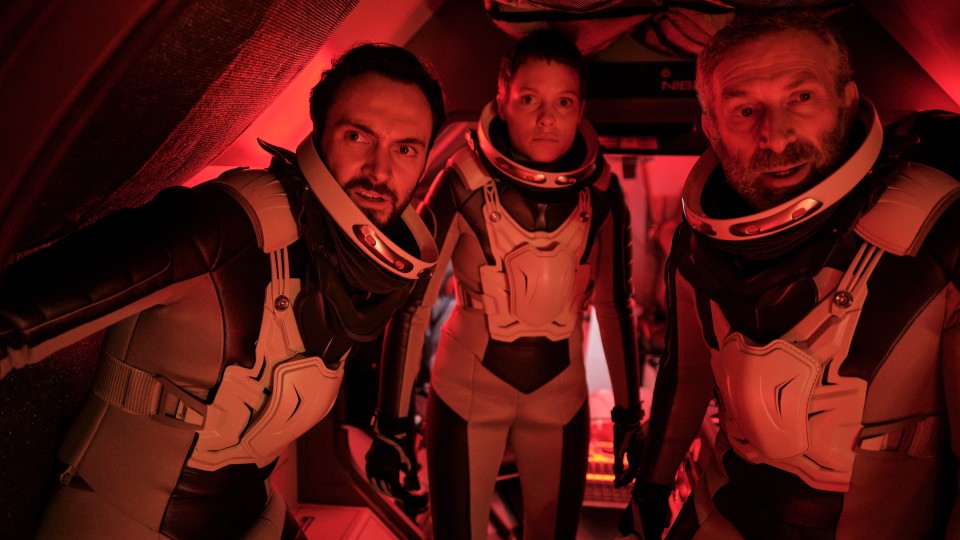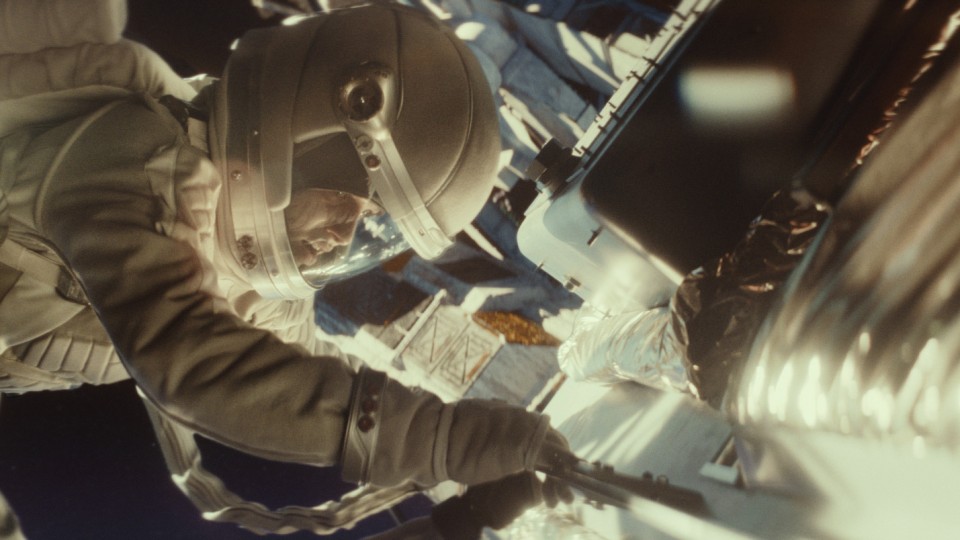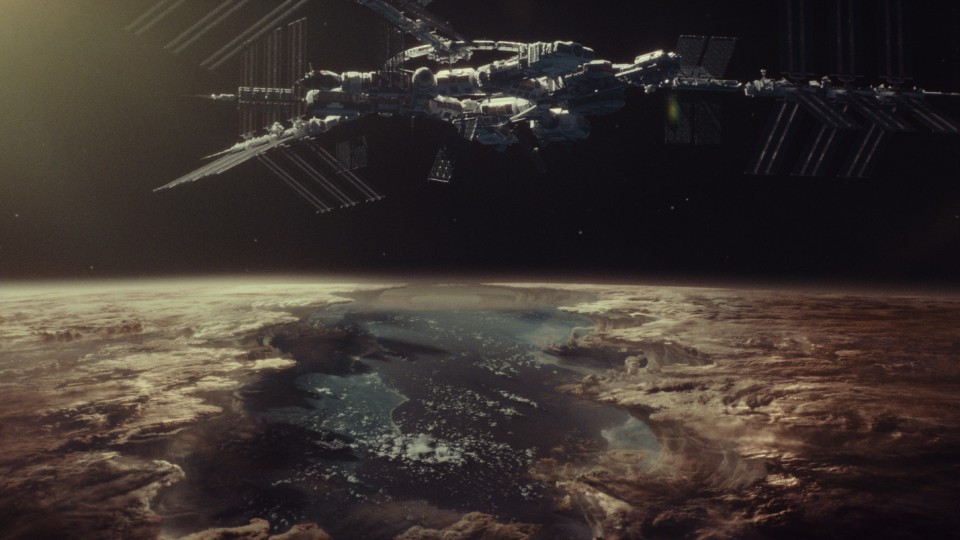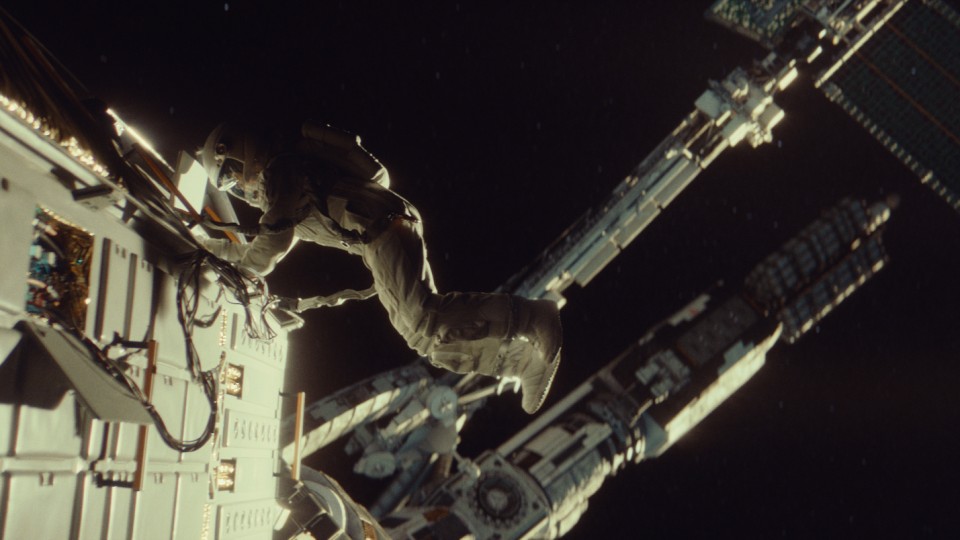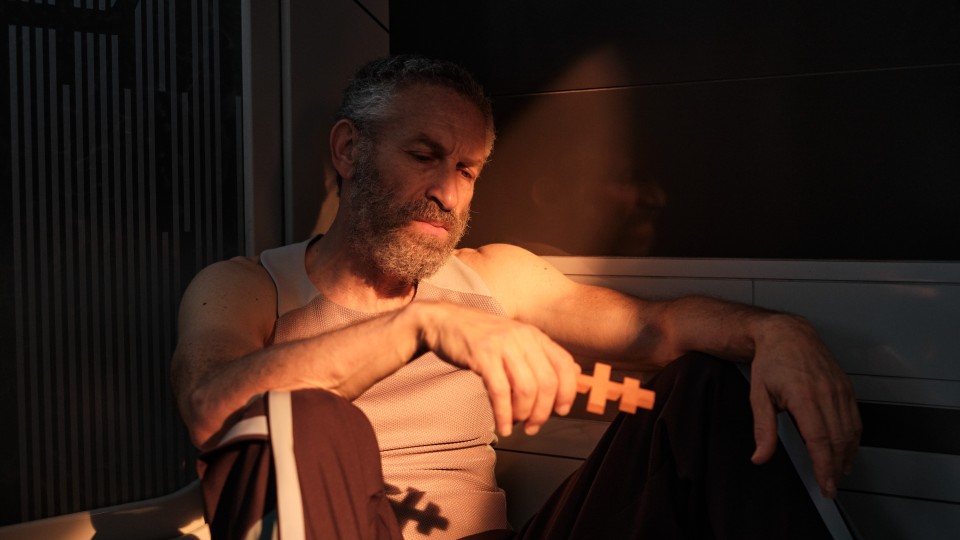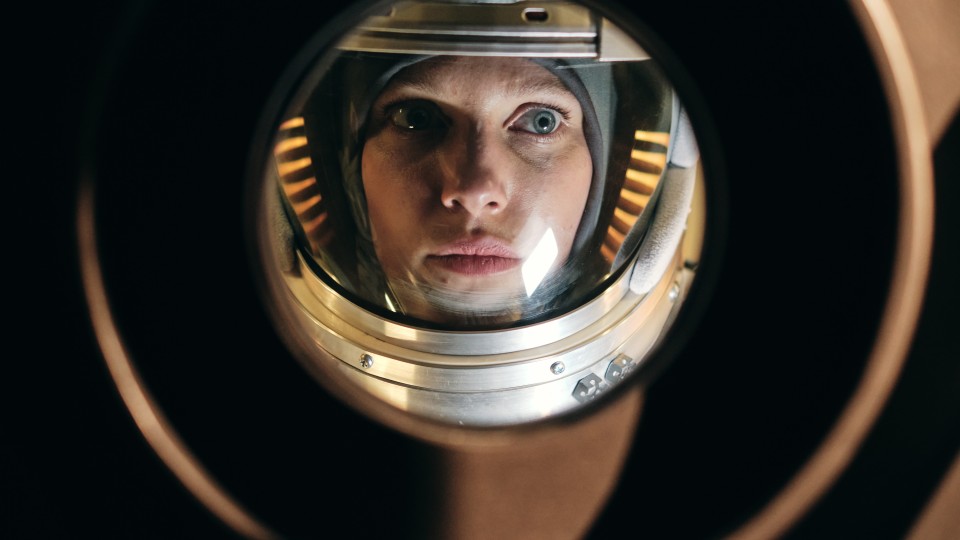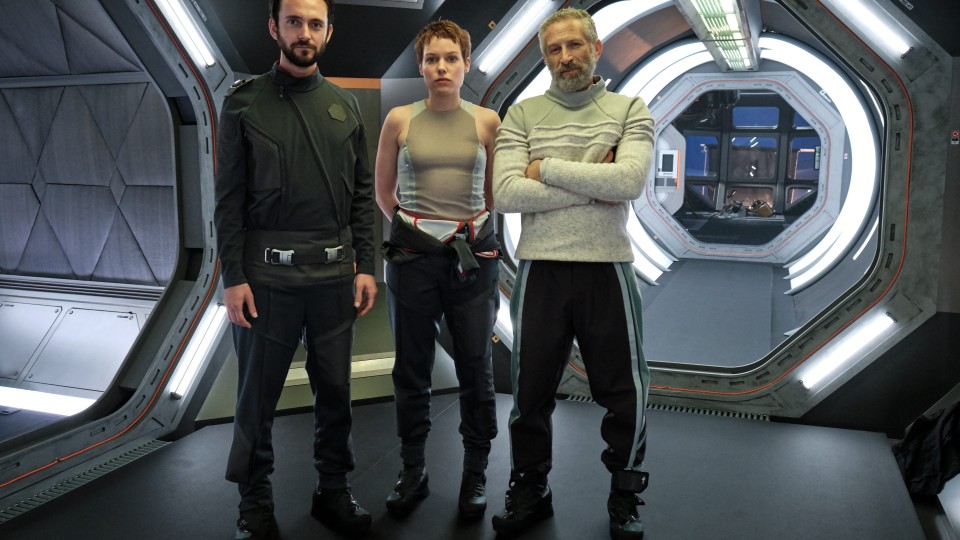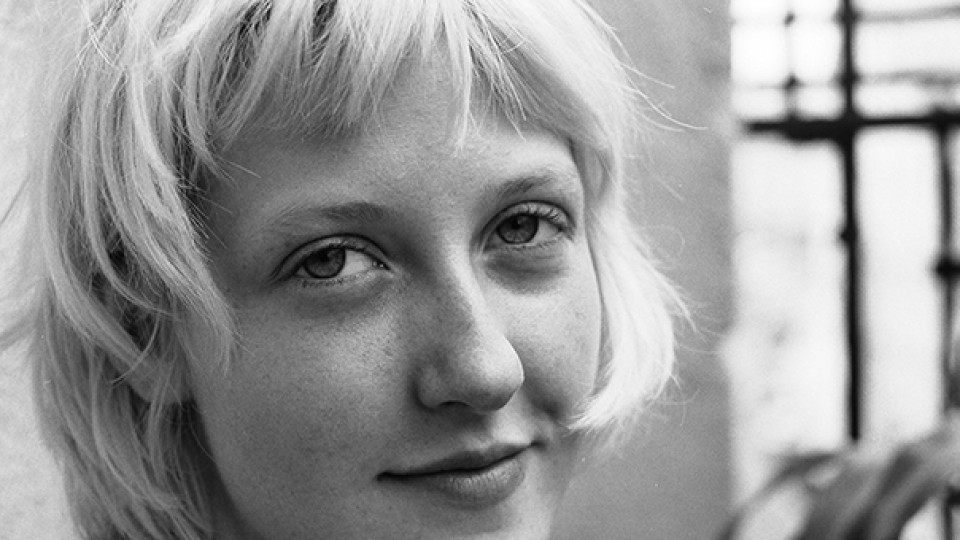Who should you save if you can’t be sure any longer what good it would do? The three crew members of the Rubikon space station
know that the ecological disaster on Earth can’t be avoided. But when a tiny glimmer of hope emerges the three individuals,
whose characters and motives for venturing into outer space could hardly be more different, find themselves in an impossible
dilemma. Leni Laurisch has embarked upon a tricky mission with her sci-fi debut RUBIKON and staged a spacey chamber piece about survival.
Launching a feature film career with a science fiction story set in space is an extraordinary decision in Austria. Is it rooted
in a special fascination this genre has for you?
LENI LAURITSCH: Perhaps this decision was also rooted in the awareness that as well as being my first film it could be my last. As a young
filmmaker you have to appreciate that not everyone who makes a first film continues their career. Which made me all the more
inclined to do something I was most keen about. I was a fan of Star Trek and Stanislaw Lem from an early age. I’ve always
been interested in the experimental potential in science fiction film. When I think of Solaris: you can reflect analytically
on being human, because you can exclude the external effects of our society and use a sci-fi narrative to open up an isolated
space. I also had this approach in mind for RUBIKON. Three main characters in a closed room seemed to me an ideal setting,
a kind of safe space for a first feature film. Another reason I chose sci-fi was that I didn't want to disappear without a
trace in the film industry, which might be more likely with a traditional drama. With a genre film I was able to establish
my own trademark more strongly.
The initial situation is in a future which appears within reach, in the year 2056. The science fiction setting is combined
with an ecological dystopia. What were your thoughts behind this opening scenario?
LENI LAURITSCH: Initially, we started from a completely different thematic approach. Let me say quite openly that I have suffered from depression
myself, and I wanted to make it part of my story. At some point, the feedback came from funding that we were getting too close
to Gravity. So we had to rethink it. The environmental issue touched me tremendously at the time. After watching the movie
Finding Coral I was in bed for a week, weeping. And there were other ecological themes that affected me hugely during this
writing phase. I wanted to take advantage of that feeling. Combining science fiction with an ecological theme is not very
original; a lot of material does that. As soon as this was actively decided, it opened up a lot of possibilities for the script.
I wanted the Rubikon, our space station, to look like a relic from ancient times. By "ancient" I mean our times, when we are
still trying to achieve climate goals, perhaps even to reverse the trend. The way the Rubikon looks in the film, it could
be super spacey now, in 2022, but it wouldn’t be later. The idea is to convey the feeling that the ambition to save the world
has been abandoned by this point.
The focus is on a three-way relationship involving two male researchers and a female soldier, who have been sent up by different
agencies but are dependent on each other. What ideas determined this triangular relationship?
LENI LAURITSCH: We completely reinvented our characters several times and experimented again and again to see what dynamics arise when one
character is pushed to the limits. Achieving a good balance between the characters was a long struggle. My co-author Jessica
Lind and I took the approach that the characters should serve the story. This is less common in Austria, where many films
are character-based. We had our schedule, our story, and the characters grew into it. Important work on the characters then
took place with the actors on the set. They contributed a lot of nuances.
The main character is Hannah, the commander, a determined and courageous woman and an excellent technician, but the other
two members of the crew don’t make life easy for her. She also has her doubts as to whether she is ready for a high-risk attempt
to save the world. How do you see your heroine?
LENI LAURITSCH: On the one hand, we were interested in this character’s inner turmoil, while on the other hand we wanted to get to grips with
heroism. It seemed to us that in this genre there is always the expectation of heroism, and we were fed up with that. One
of the questions we wanted to pose in our science fiction framework was how to live the theme of solidarity. We wanted to
maximize the conflict that we all know as human beings. You could do so much to save the planet, but then there’s also this
one life that you have to live, with all your own desires and needs. We were interested in these interfaces of friction.
A drama set exclusively in a space station represents a special challenge for set design and other artistic departments. How
did this work develop, despite the considerable budgetary restrictions?
LENI LAURITSCH: The first sessions with Johannes Mücke, our set designer, were of course dominated by the question of how we could do this
with so little money. Johannes is someone who approaches his work with American enthusiasm and a "we can do it" attitude.
During one of the first sessions the idea emerged that instead of constructing the station as a whole we should build it in
three parts and align the shooting schedule accordingly. That saved a lot of time. Another significant contribution was made
by the cameramen, Andreas Thalhammer and Xiaosu Han, who thought very actively and visually. For example, they adjusted the
angles of the corridors, so we could achieve maximum depth. They were more ambitious than I would have dared to be. In the
three-way relationship between set design, the cameramen and me, real miracles came about. We pushed each other. And in the
close collaboration with Johannes in the script phase, something like a defining spatiality for each character was created.
For Hannah it was the control and technical centers, for Gavin the Earth observatory and for Dimitry the laboratory and the
algae facilities. This made it possible for characters to venture into other people’s areas or retreat and merge with their
own spaces. The spaces also created conflict on an unconscious level. Even though the rooms were specified in the script,
it was only in the work with Johannes that it became clear how much the rooms were connected with the characters.
What form did the work in other departments take?
LENI LAURITSCH: With costumes I worked very intensively with Monika Buttinger. The budget issue made itself felt even more harshly here: just
to mention the helmets, which were unspeakably expensive, and we needed quite a few of them. On top of that, those helmets
were in constant danger of being damaged if they weren’t ventilated in a very specific way. Which was even more difficult
when the characters had to walk in them. The helmets really kept us busy, Monika and I, but we gritted our teeth and got through
it. We were also faced with the constant question of how techy or how retro we wanted something to look. Finding the right
balance was an important process. I was fundamentally involved in all departments, because we couldn’t allow ourselves to
make a lot of mistakes. We did have one issue which seriously jeopardized our budget. We constantly had to make sure the costs
didn’t explode. One thing was clear; everything, no matter in which department, always had to be a precision landing.
The issue of Hannah's space walks is also resolved impressively. What is behind these sequences?
LENI LAURITSCH: I was very glad I’d done a lot of compositing for short films beforehand, and at the beginning of the project I worked together
with my boyfriend at the time, who was the first VFX student in Austria. We were both incredibly fascinated by what you could
do. It was like magic for me, the way you could use little tricks to pull the wool over the audience’s eyes slightly. For
the space walk we also knew we had just one afternoon to set up everything with rope harnesses, crane and stuntmen and get
the most out of the time available. There was a storyboard for everything, and we’d done some tests with Julia. Our aim was
to make it as frightening as possible, to create the feeling that the slightest mistake could send her drifting off into space.
I had looked through a lot of VR material with astronauts emerging from the ISS. That’s when you realize how creepy it is.
You'd think the Earth would seem incredibly far away, but it feels like you're on a very, very high springboard. You still
get the sense of height. We did a lot of research for the script at the European Space Agency, looked at material there and
also talked to astronauts to get a feel for it. I wanted to capture that nerve-wracking feeling that one small mistake would
be enough to send you flying away from the mothership. The cooperation with the camera was again very important. Interestingly,
the people who work on effects always want to work with us directors via VR technology. I couldn't do it that way. I have
to sit at the computer with the artist, and I need the motion curves of the camera, which we then adjust together. Everyone
tries to tell you to work out the effects with VR. I think things work much better analogue. All in all – it was work, work,
work. Testing, lots of discussions, questioning everything. "We'll look at that on set," was a sentence we never allowed ourselves
to utter.
Interview: Karin Schiefer
June 2022
Translation: Charles Osborne

